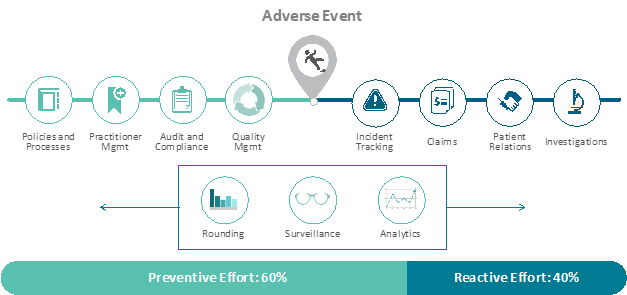As we head into the second half of 2020, many of the temporary flexibilities for telehealth allowed during the COVID-19 pandemic have been made permanent. Since its arrival in
Read more »How to Avoid the “Bang” in Healthcare – Verge Health
The healthcare sector is complex by nature. Physicians aren’t necessarily employed by hospitals, so the level of internal communication needed to generate better data is often not there. Since medical errors still rank as the third leading cause of death, with roughly 10 percent of deaths in the United States due to preventable medical mistakes each year [1], there’s certainly room for improvement. As reports confirm that patient experience and patient safety are directly linked, [2] hospitals must be focused on both to succeed in providing patient-centered care.
The military developed a behavioral approach to help teams sharpen their tactical awareness skills in combat to remain “left of bang,” or to fend off hostile actions before they culminate in the “bang” of conflict. Healthcare needs to deploy the same approach to managing risk and improving patient safety outcomes. Almost all of healthcare is focused on the “right of bang” approach, or the reactive correction of adverse events (Image 1). Everything is oriented to logistically and financially react to a problem that has already occurred. And as healthcare errors go unreported, hospitals often aren’t equipped to conduct apt investigations.

Image 1
Nationwide, forward-thinking healthcare organizations are starting to realize the importance of adopting solutions that allow them to stay “left of bang”. Data collection, over time, of traditionally siloed departments, allows hospitals and health systems to pinpoint at-risk processes, before an error can occur. This methodology aids to prevent and intervene in those situations heading towards a bad outcome or “bang.”
This movement, from an operational mode to a preventative approach is essential for the evolution of healthcare safety, especially as the industry continues to push towards value-based care. Hospitals have a pathway to achieving zero harm, but only if they connect data and develop effective tracking measures to ensure all safety issues are addressed in real time.
Health systems must evaluate the barriers employees face, in order to improve this process. In particular for medication error reporting, a study found that the extra time required in reporting and cumbersome report forms, deterred employees from “telling” someone. For every medication error reported, there were as many as 100 errors not reported or detected [3].
Identifying the hurdles that healthcare professionals face, is an important first step in improving medical errors. Organizational culture and system improvements deeply impact how errors are responded to by hospital management and how often front-line staff report errors in order to prevent future harm to patients. By planning and preparing for medical errors, organizations can reduce the frequency and severity of them happening in the first place, further driving their high reliability goals and preventing future patients from being harmed.
Resources:

